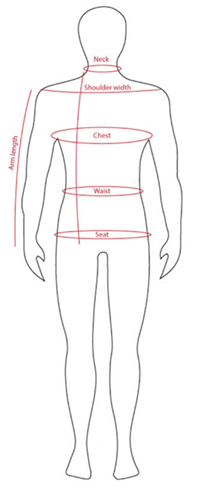Choosing Your Best PPE Garment Size: A Comprehensive Guide

Introduction
Finding the best fit for your safety wear, also known as Personal Protective Equipment (PPE), is crucial for your safety and comfort. Whether you're in construction or healthcare, the right PPE size matters a lot. Our guide simplifies the process, helping you understand how to measure your body and how the clothing should fit. We aim to assist you in selecting a PPE that not only meets safety standards but also fits you perfectly. Our guide is packed with straightforward tips and advice, ensuring you choose safety wear that's just right for you.
Protective Garments and Proper Fit
When it comes to selecting the size of your PPE garment, two important aspects must be considered:
A. Garment shouldn’t be too large: properly fitted garments will avoid loosen garments parts to be hooked up by any moving machines parts (OSHA's standard for PPE -29 CFR 1910.132).
B. Garments shouldn’t be too small: as heat can be transferred to human skin. Loose fit garments create a sort of air gap between human skin and garments which can increase the protection levels.
Choosing PPE Size
Usually, size specifications for PPE garments may not be the same as those for consumer garments.
Sizing charts are helpful in choosing PPE sizes, however, with “too many details” it can get confusing.
In the following, a simple approach to choose the best fit of PPE garments.
Garments Ease
The “ease” is the difference between the finished garment measurements and your actual body measurements.
Ease is what allows us to move into our clothes - to feel comfortable sitting, standing, and moving arms and legs.
Body Measurements + Wearing Ease = Finished Garment Measurements
Body Measurements

Measure your exact body measurements – you can download the measuring tape: Download Here!
Measure:
- Neck
- Shoulder
- Chest
- Waist (Sitting Down)
- Seat (Hips)
- Arm Length
Add Ease
As PPE are required to be kind of “loose Fit” as explained, it is recommended to add these eases to each body measurements, which is also a factor on the type of garment (Unit of Measure is Inch):

Finished Garment Measurements
After adding the appropriate ease to your body measurements, the next step is to match these adjusted figures to the PPE size chart for each item. This process will help you identify the right size that corresponds to your modified measurements.




Conclusion
Selecting the best PPE garment size is a crucial step in ensuring your safety and comfort at work. Understanding the importance of proper fit, how to measure your body accurately, and how to adjust these measurements with the right amount of ease are key to making an informed choice. By following this guide, you'll be able to choose PPE that not only protects you but also fits you perfectly, allowing you to perform your job safely and effectively. Remember, when it comes to PPE, the right size truly makes all the difference.
